Nombre:
Centro Memorial de Buda de Fo Guang Shan
Otro:
Localización:
View Larger Map
Récord: 48 m
Tipo: Estatuas
Categoría: Estatuas Budistas
Foto:
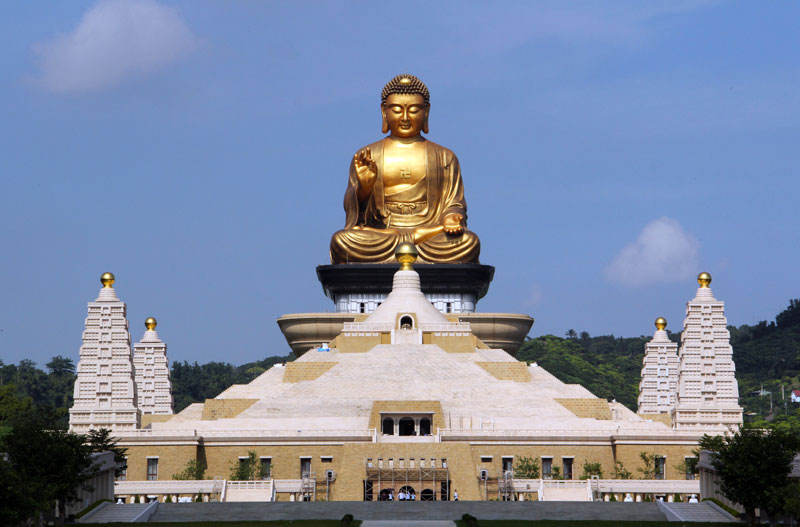
Voto:
Continente: Asia
País: Taiwan
Localización: Kaohsiung, Dashu District
Año: 2011
Estado: Terminado
Descripción:Fo Guang Shan (Montaña Luz de Buda) está situada en el noreste de Kaohsiung en el Distrito de Da Shu. Es un santuario budista reconocido en el mundo. También es conocida como ¨la ciudad budista del sur de Taiwán¨. Fue construida por el Maestro Xing Yun y sus discípulos. Fo Guang Shan es el santuario budista más grande de Taiwán. Su fundador, el Maestro Xing Yun, lo construyó para abogar por la doctrina del ¨budismo humano¨, y fue construido ladrillo a ladrillo en la montaña Luz de Buda. Se convirtió en el santuario religioso con más creyentes y más prestigioso en Taiwán.
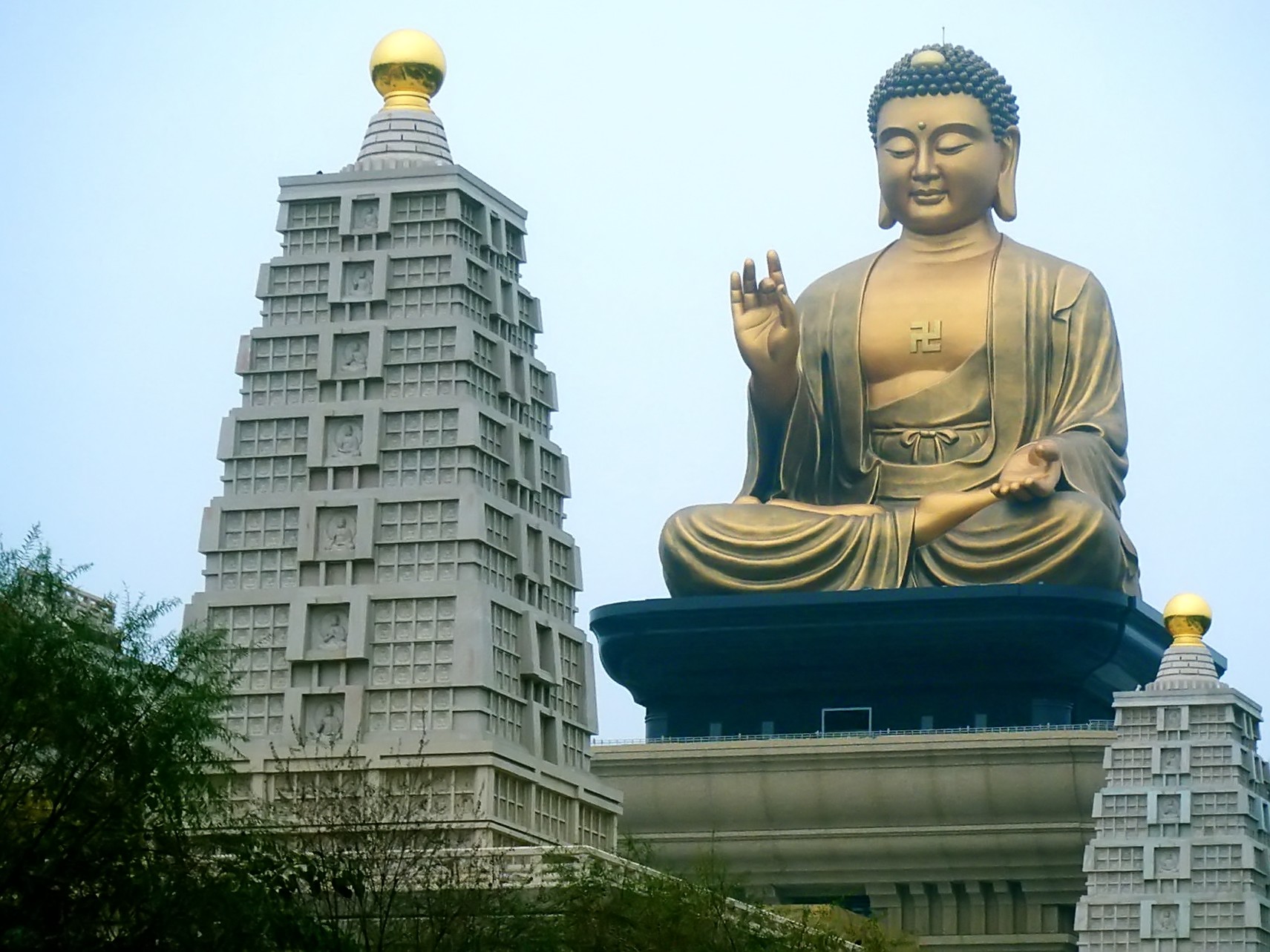

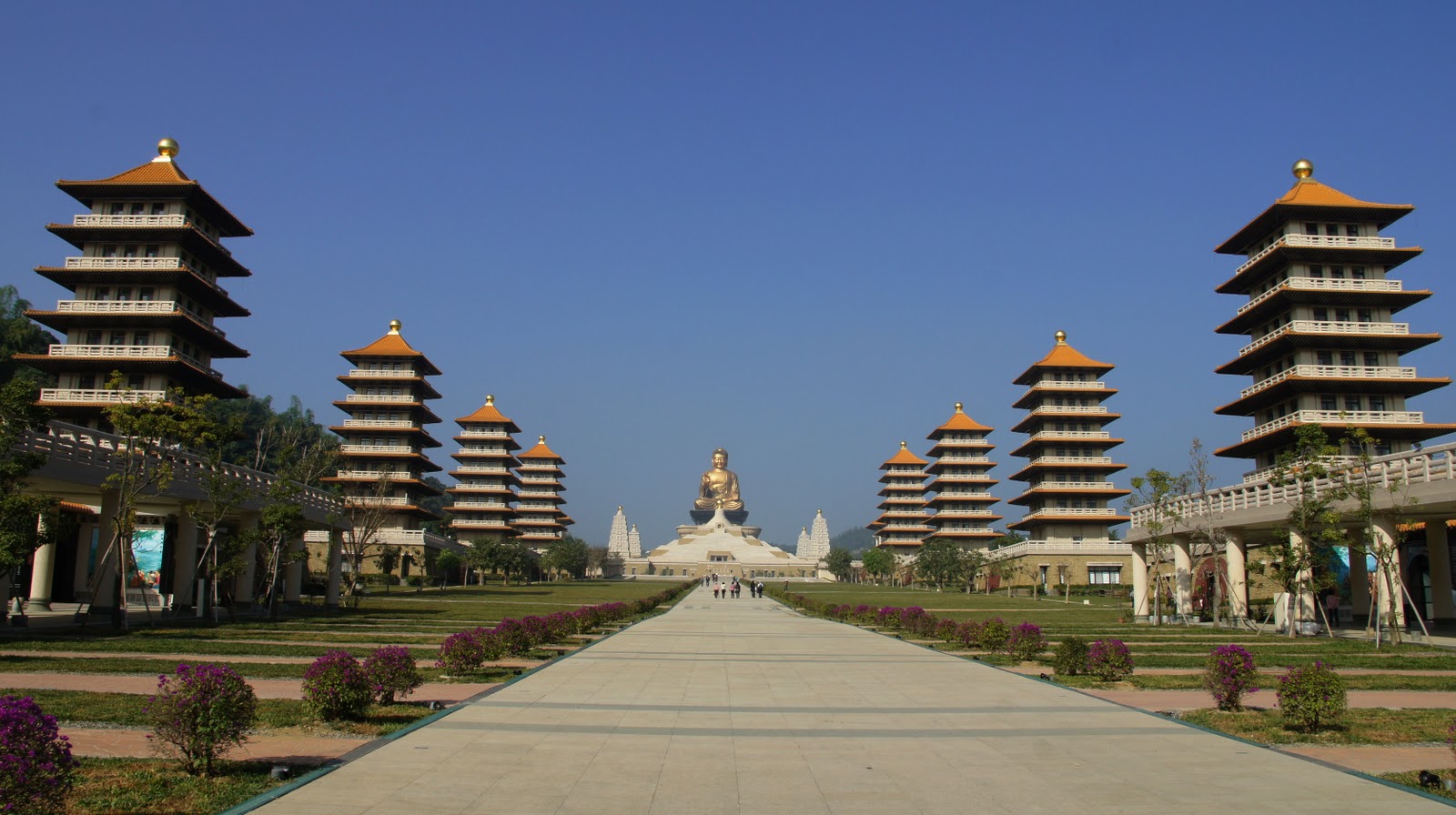
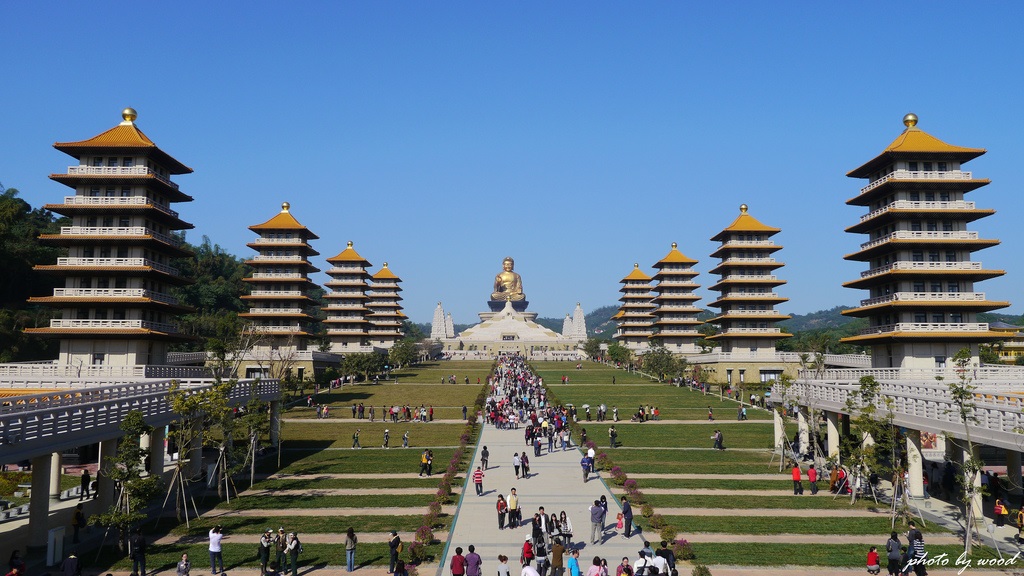
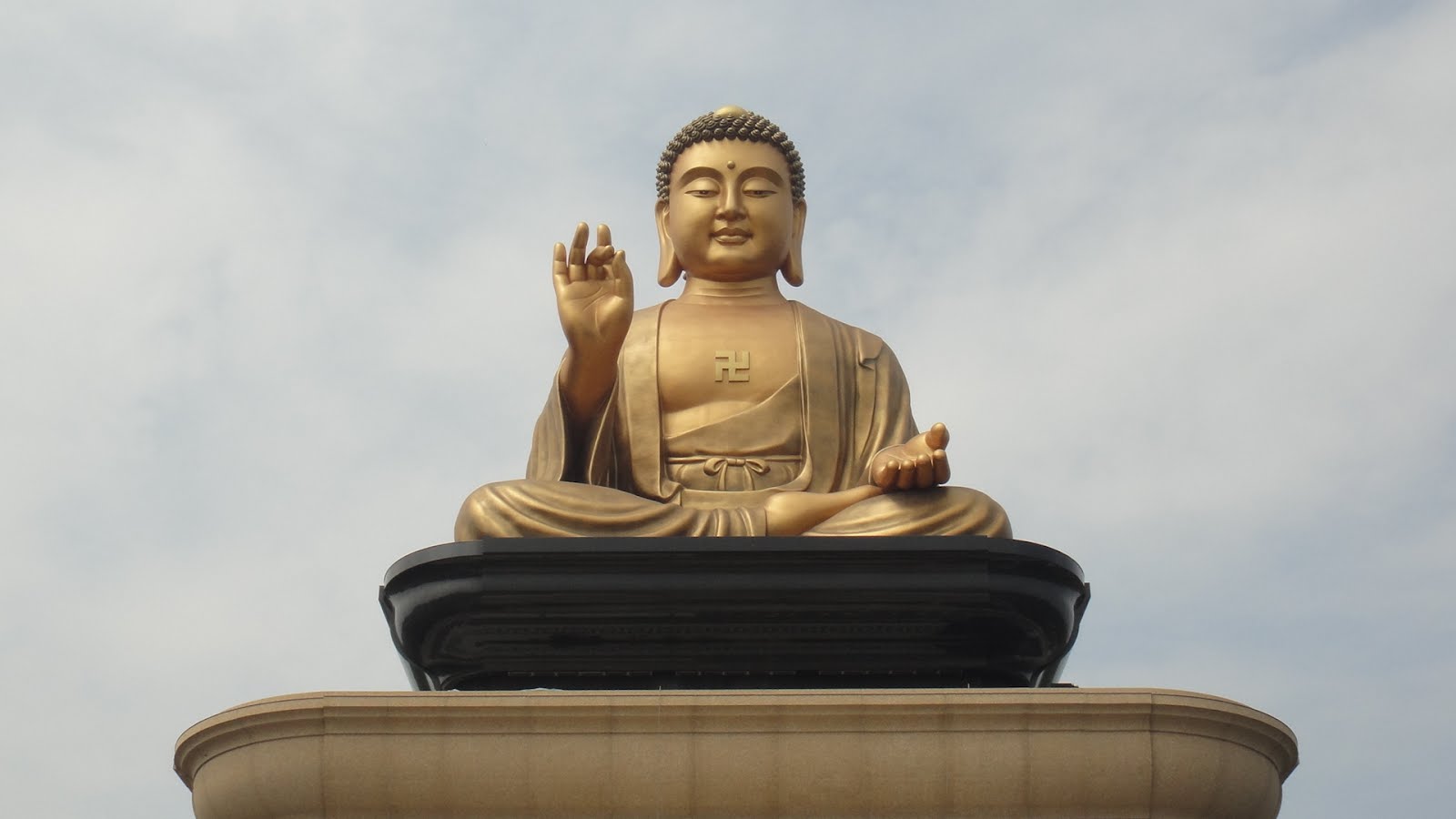
http://spanish.taiwan.net.tw/Hot-Scene-Content.aspx?a=221
Buddha Memorial Center in Taiwan
In 1998, Hsing Yun held the Bodhgaya International Full Ordination in India. This drew the attention of Kunga Dorje Rinpoche, a Tibetan lama who had been protecting the last remaining Buddha's tooth relic since the destruction of Namgyal Monastery in Tibet during the Cultural Revolution. The relic itself has been authenticated by several Tibetan rinpoches who had advised Kunga Dorje Rinpoche to build a stupa, but he was unable to do so due to old age. They reached the consensus to donate the tooth relic to Hsing Yun, believing he had the means to build a stupa so the public could pay their respects and make offerings to the Buddha's tooth relic. The relic was officially escorted to Taiwan on April 8, 1998.[1]
Building plans for the Buddha Memorial Center started immediately in 1998 with support from the government. The site is situated immediately behind the main temple and covers more than 100 hectares. The complex faces east and is built along a central axial line. There is the Welcoming Hall, the eight Chinese-styled pagodas that stand for the Noble Eightfold Path, Photo Terrace, Bodhi Square, Memorial Hall, four stupas that symbolize the Four Noble Truths, and the Fo Guang Buddha. The opening date has been set for 20 December 2011.
The newly constructed Buddha Memorial Center in Kaohsiung, Taiwan. was recently consecrated. It is built next to the Fo Guang Shan Monastery, a Buddhist temple in Kaohsiung, and will serve as a hub for Buddhist education and cultural exchange. Photo taken on Dec. 25, 2011 shows the consecration ceremony of the Buddha Memorial Center in Kaohsiung, southeast China's Taiwan. Built next to the Fo Guang Shan Monastery, a Buddhist temple in Kaohsiung, the Buddha Memorial Center was consecrated here on Sunday. The center will serve as a hub for Buddhist education and cultural exchange.
Buddhists from the Chinese Mainland and Taiwan chant peace prayers, composed by Master Hsing Yun, a well-known Buddhist monk, at the Buddha Memorial Center in Kaohsiung, southeast China's Taiwan, Dec. 25, 2011. Built next to the Fo Guang Shan Monastery, a Buddhist temple in Kaohsiung, the Buddha Memorial Center was consecrated here on Sunday. The center will serve as a hub for Buddhist education and cultural exchange.
Buddhists prepare to chant peace prayers, composed by Master Hsing Yun, a well-known Buddhist monk, at the Buddha Memorial Center in Kaohsiung, southeast China's Taiwan, Dec. 25, 2011. Built next to the Fo Guang Shan Monastery, a Buddhist temple in Kaohsiung, the Buddha Memorial Center was consecrated here on Sunday. The center will serve as a hub for Buddhist education and cultural exchange.
Two Buddhist nuns walk past a gate at the newly-built Buddha Memorial Center in Kaohsiung, southeast China's Taiwan, Dec. 22, 2011. Built next to the Fo Guang Shan Monastery, a Buddhist temple in Kaohsiung, the Buddha Memorial Center is to be consecrated on Dec. 25, 2011. A Buddha's tooth relic will also be escorted here on the same day and enshrined for future worship. With an area that exceeds 100 hectares, the complex consists of various facilities, including a welcoming hall, eight Chinese-style pagodas, a square, a memorial hall and a Buddha statue.
Master Hsing Yun, a well-known Buddhist monk who founded the Fo Guang Shan Buddhist order, poses for photos at the newly-built Buddha Memorial Center in Kaohsiung, southeast China's Taiwan, Dec. 22, 2011. Built next to the Fo Guang Shan Monastery, a Buddhist temple in Kaohsiung, the Buddha Memorial Center is to be consecrated on Dec. 25, 2011. A Buddha's tooth relic will also be escorted here on the same day and enshrined for future worship. With an area that exceeds 100 hectares, the complex consists of various facilities, including a welcoming hall, eight Chinese-style pagodas, a square, a memorial hall and a Buddha statue.
http://www.taiwanholidays.com.au/buddha-memorial-centre-in-foguanshan
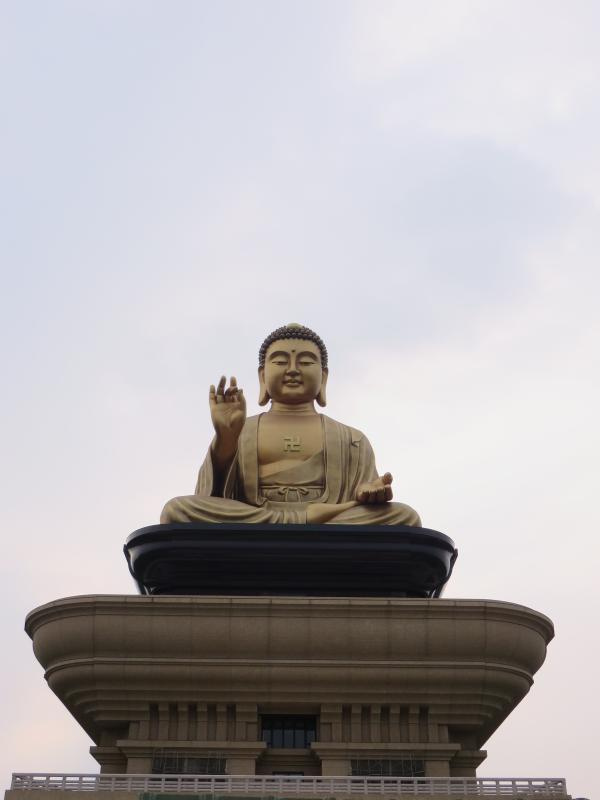
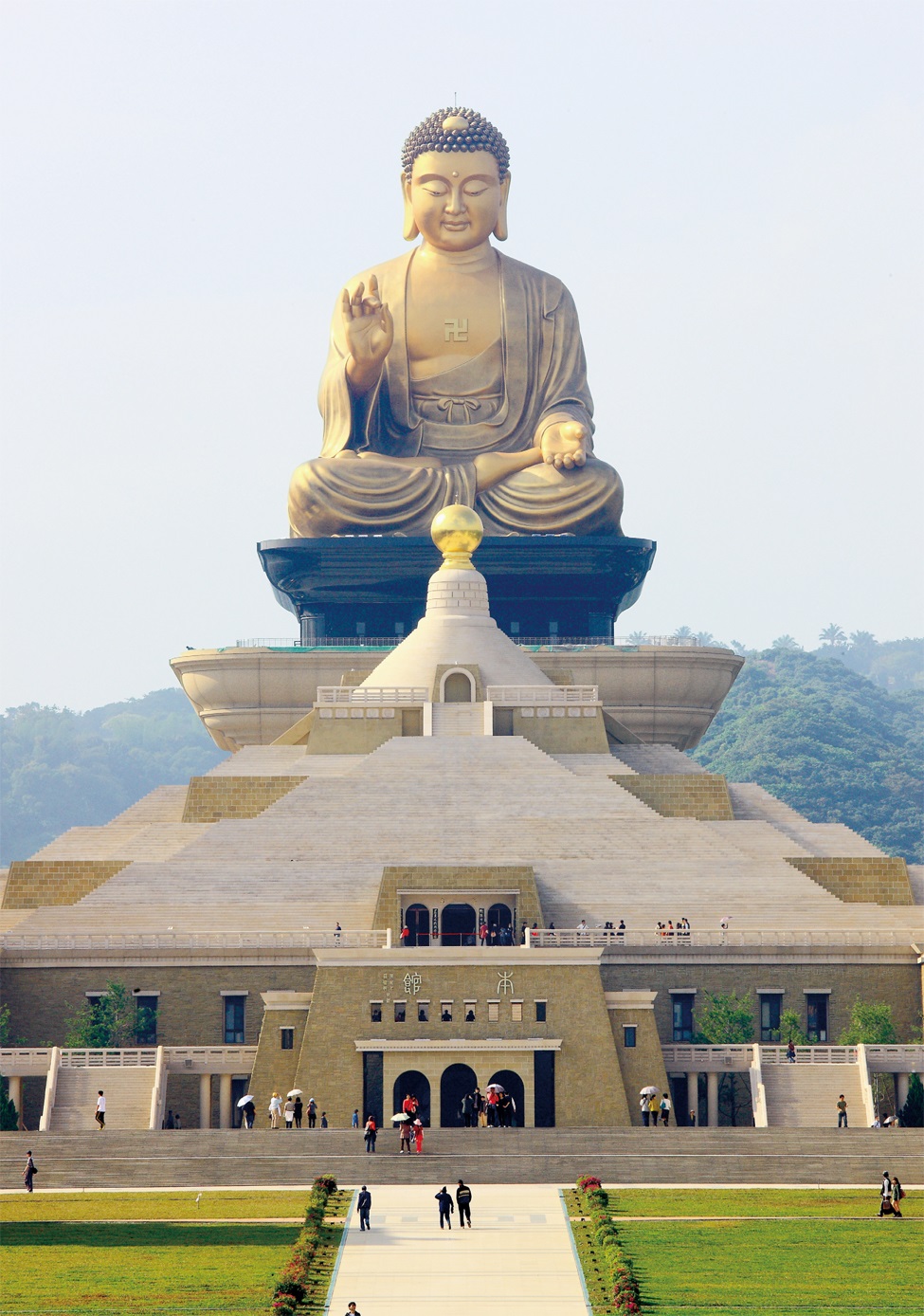
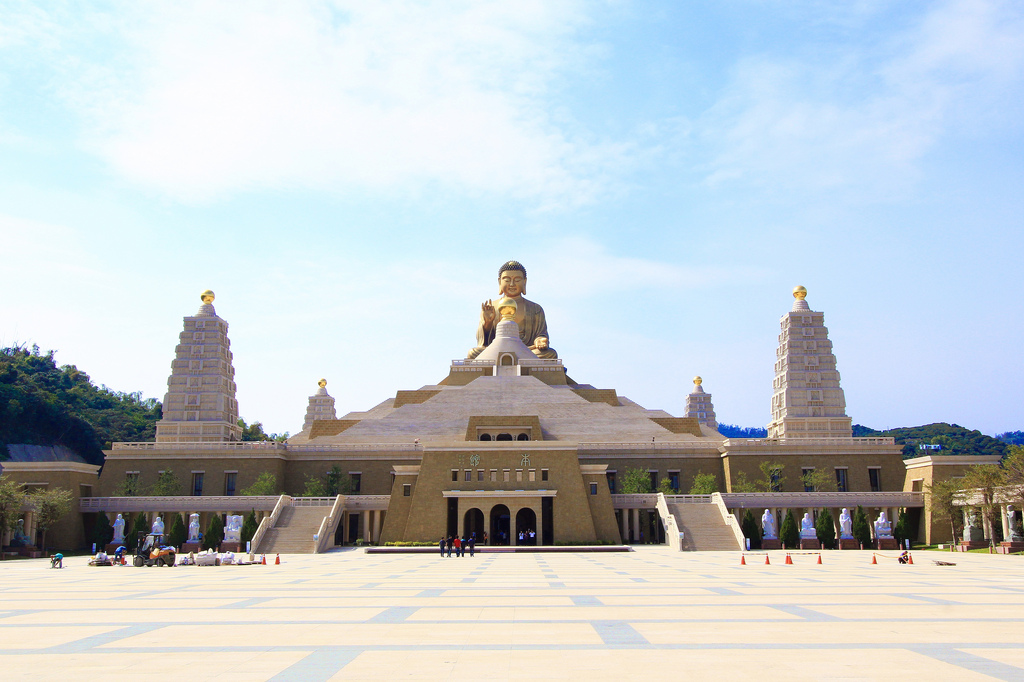

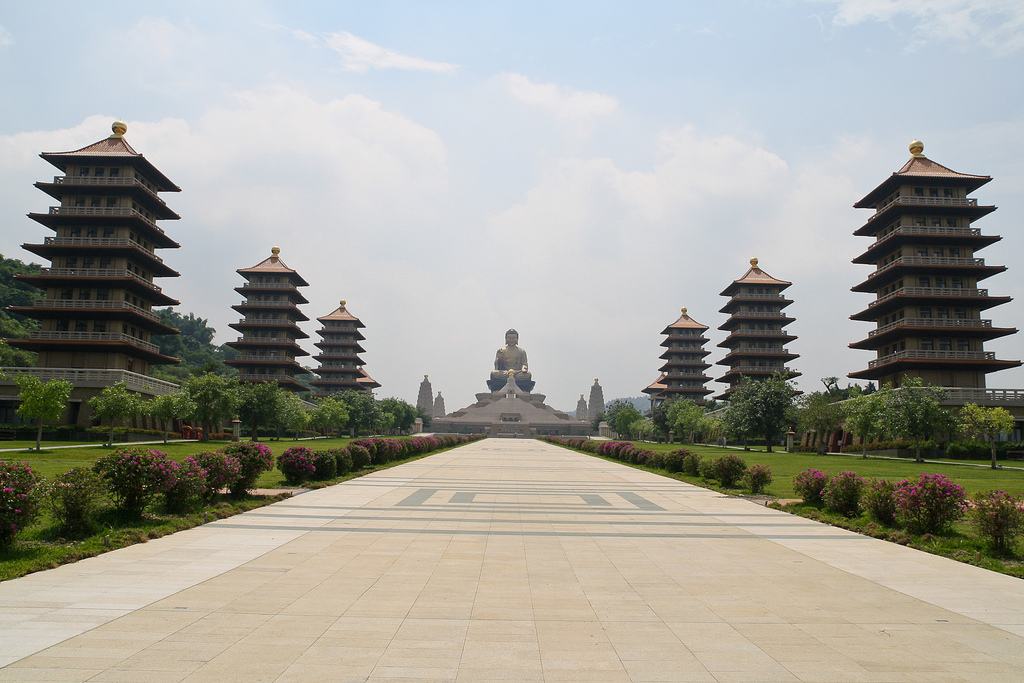
The Fo Guang Shan Buddha Memorial Center (Chinese: 佛光山佛陀紀念館; pinyin: Fóguāngshān Fótuó jìniànguǎn) is a Mahayana Buddhist cultural, religious and educational complex located in Taiwan's Kaohsiung City, Dashu District. The center is affiliated with Fo Guang Shan, one of Taiwan's largest Buddhist organizations. The center houses one of the tooth relics of Gautama Buddha, the founder of the Buddhist faith. Construction of the center began in 2008, and the complex was opened to the public in December 2011.
History
In 1998, Fo Guang Shan founder Hsing Yun held the Bodhgaya International Full Ordination in India. This drew the attention of Kunga Dorje Rinpoche, a Tibetan lama who had been protecting one of the last remaining tooth relics of Gautama Buddha since the destruction of Namgyal Monastery in Tibet during the Cultural Revolution. The relic itself had been authenticated by several Tibetan rinpoches who had advised Kunga Dorje Rinpoche to build a stupa, but he was unable to do so due to old age. They reached the consensus to donate the tooth relic to Hsing Yun, believing he had the means to build a stupa so the public could pay their respects and make offerings to the Buddha's tooth relic. The relic was officially escorted to Taiwan on April 8, 1998.[1]
Building plans for the Buddha Memorial Center started immediately in 1998 with support from the government. The site is situated immediately behind the main temple and covers more than 100 hectares. The complex faces east and is built along a central axial line. There is the Welcoming Hall, the eight Chinese-styled pagodas that stand for the Noble Eightfold Path, Photo Terrace, Bodhi Square, Memorial Hall, four stupas that symbolize the Four Noble Truths, and the Fo Guang Buddha.
http://en.wikipedia.org/wiki/Buddha_Memorial_Center
http://en.wikipedia.org/wiki/Fo_Guang_Shan
http://www.fgs.org.tw/events/heart/eg/egheart2-1.html
http://www.flickr.com/photos/pipiq/tags/buddhamemorialcenter/
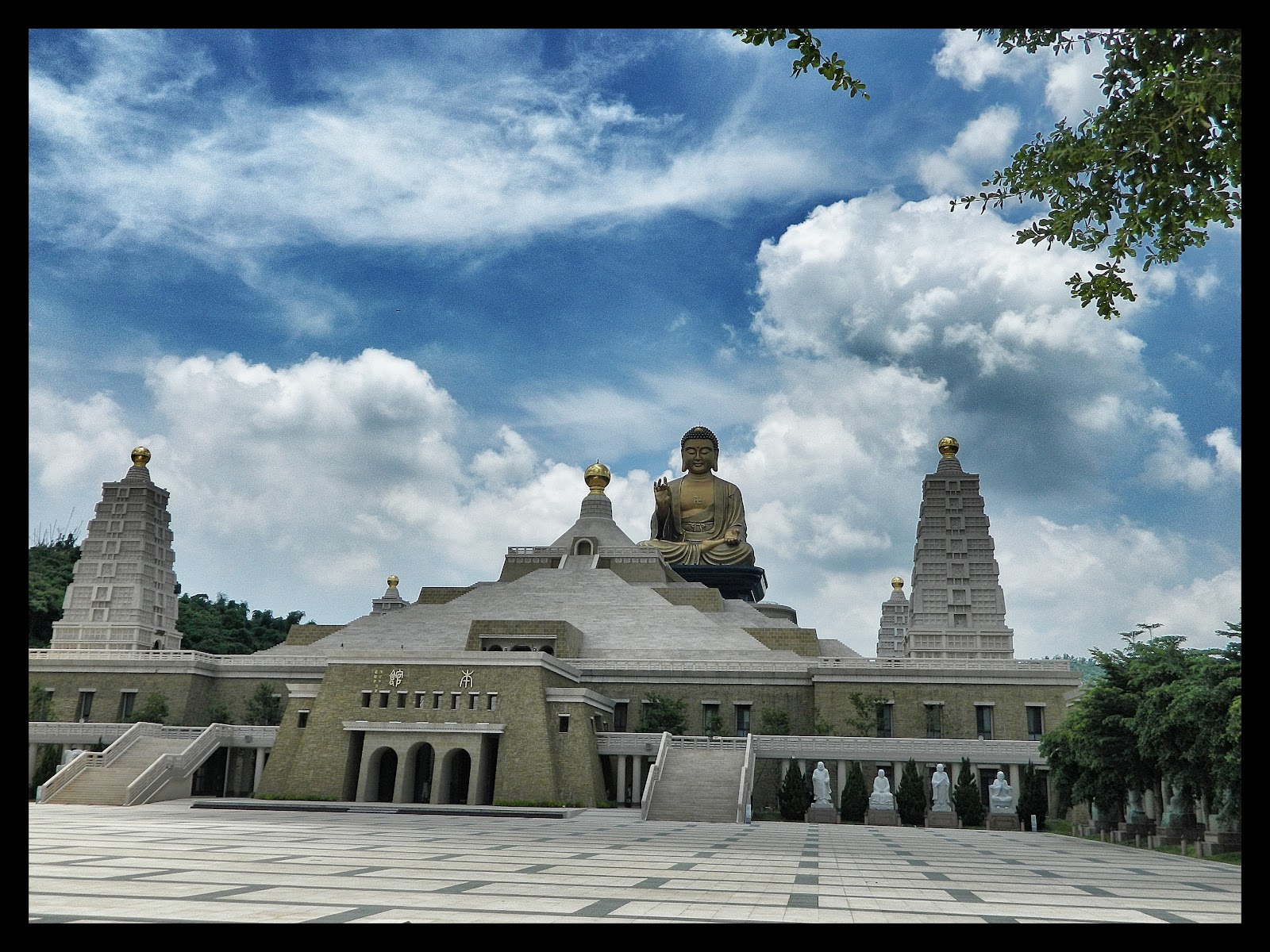
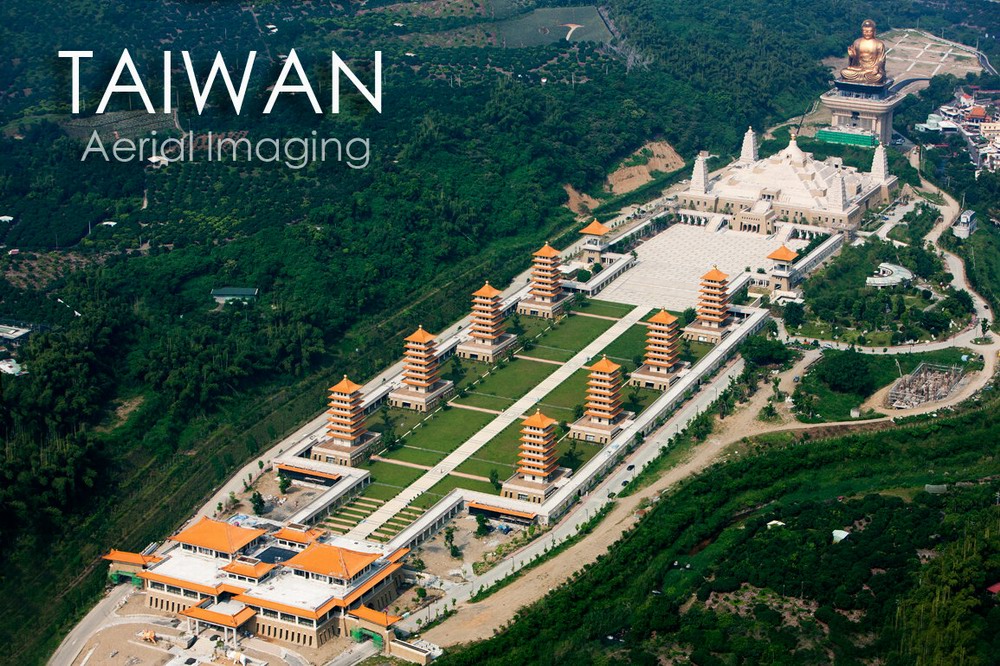
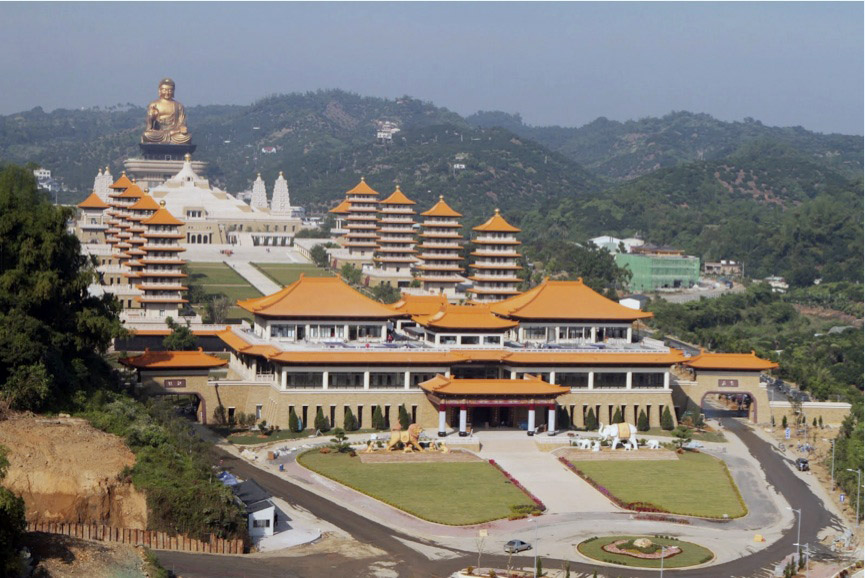
Vídeo:
Web recomendada: http://www.fgsbmc.org.tw/
Contador: 10067
Inserción: 2013-08-20 13:01:38
Lugares a visitar en un radio de 100 km (en línea recta)
Mapa de los lugares a 100 km (en línea recta)
Mostrando Registros desde el 1 hasta el 0 de un total de 0
Visitas |
Más visitados Basílica de San Marcos 154834 Catedral de Notre Dame (París) 144149 Torre de Pisa 131502 Monte Saint-Michel 100619 Presa de las Tres Gargantas 81431 |
Incorporaciones |
Comentarios hazola Cúpula de la Roca gracias me... gera Buenos Aires las mejores fotos de la mejor ciudad del... Daniel M. - BRASIL San Francisco ... PEQUE Presa Chicoasén SERA QUE ALGUIEN ME PUEDE DAR MAS INFORMACIÓN DE ESTE PROYECTO ESTUDIO EN LA UNACH Y ES PARA UN... Mery Huaca Pucllana Muy interesante, muy buena la información y... |
 Tweet
Tweet


